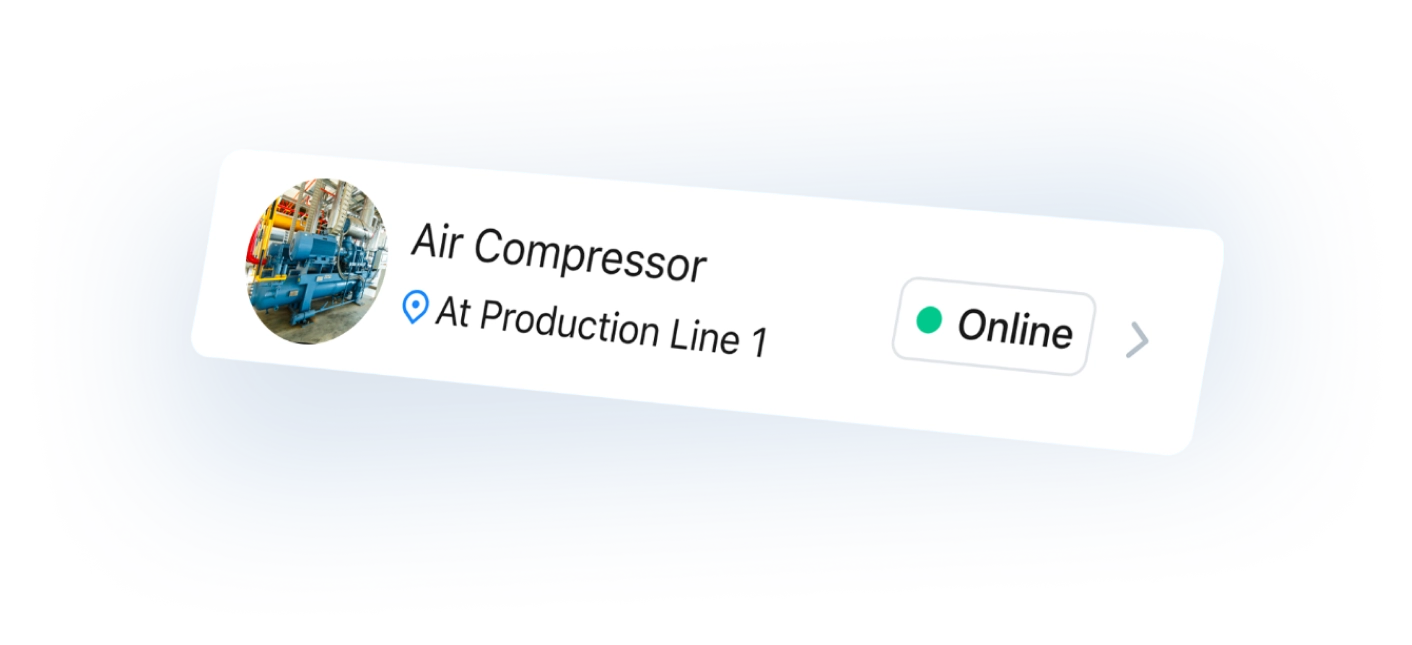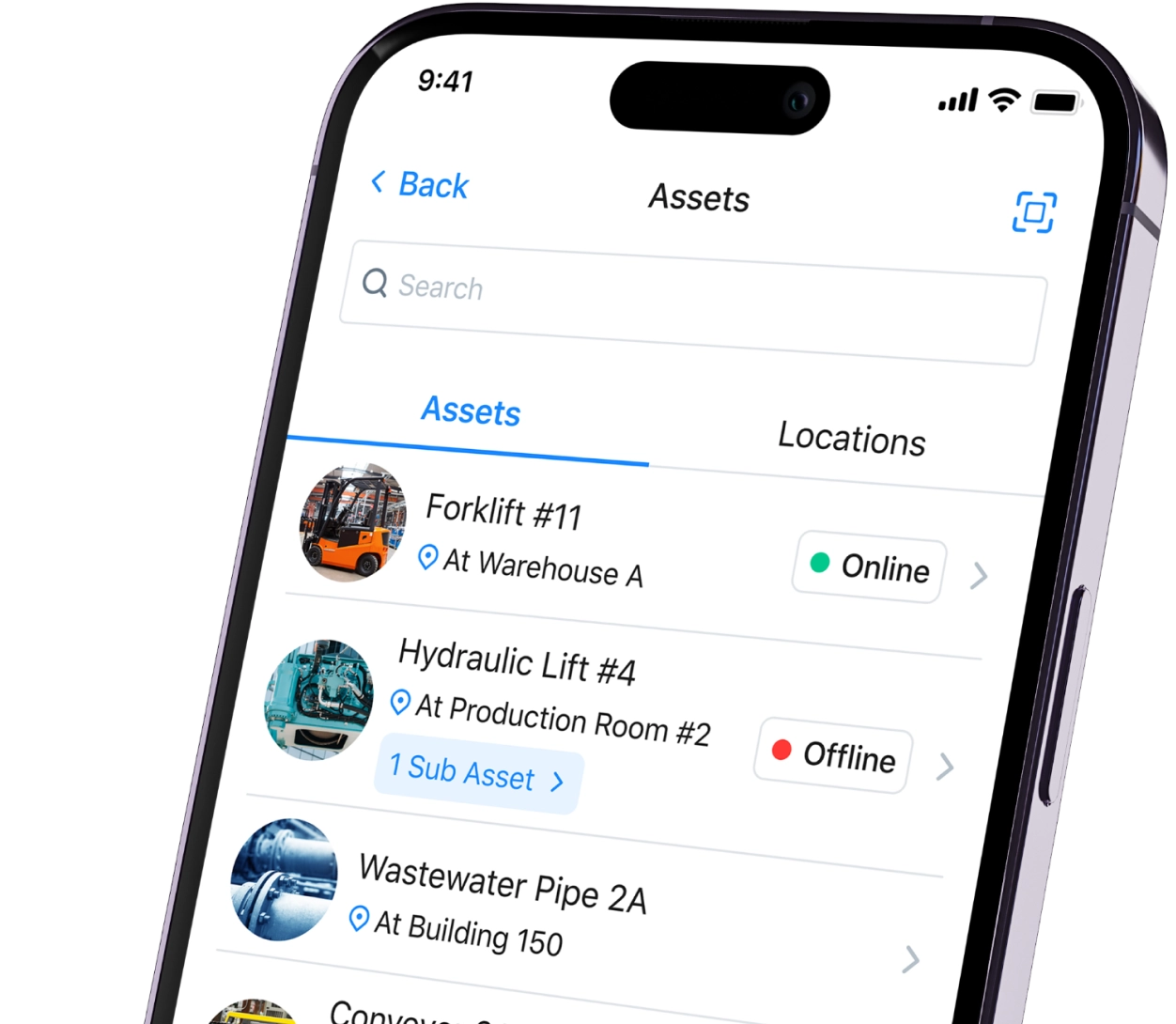What are preventive maintenance and predictive maintenance?
Preventive maintenance involves following a predetermined maintenance schedule, while predictive maintenance involves monitoring asset condition and enhancing asset performance to determine maintenance needs.
Both are proactive maintenance strategies, but they’re different in many ways. In this article, we’ll explore the differences between preventive vs. predictive maintenance.
Key Takeaways
- Preventive maintenance is scheduled at fixed intervals. Predictive maintenance is triggered by real-time asset data.
- Preventive maintenance is simpler and cheaper to start with. Predictive maintenance requires a higher upfront investment in sensors and analytics.
- A CMMS is vital for effectively managing both preventive and predictive maintenance strategies.
- The best approach combines both methods. Use preventive maintenance for low-impact assets and predictive maintenance for critical assets.
What is the difference between preventive and predictive maintenance?
Here’s an overview of the differences between preventive vs. predictive maintenance:

What is preventive maintenance?
A preventive maintenance program (PM) is routine maintenance triggered by time thresholds, meters, or events.
Think of PM in terms of your car. You don’t let car components like brakes run to failure. You proactively maintain them based on a schedule recommended by the manufacturer or based on your own assessment.
What are preventive maintenance work orders?
Preventive maintenance work orders (PMs) are tasks you perform to proactively maintain asset health and performance.
They’re often scheduled by date—every week, month, or year—or by usage. But the exact schedule depends on the asset or the manufacturer's guidelines.
PM plans involve conducting regular inspections and maintaining accurate service records, and knowing each part's lifespan to anticipate the appropriate time to change parts.
What are the benefits of preventive maintenance?
Preventive maintenance offers companies several benefits:
- Increased equipment reliability and asset lifespan: Preventive maintenance ensures critical assets run at a steady productivity level throughout the year. It also extends equipment lifespans, reducing the need for frequent capital investments.
- Decreased downtime: Preventive maintenance is a proactive maintenance approach. It aims to prevent failure before it occurs. This translates to fewer failure events and reduced downtime.
- Reduced costs: A decrease in equipment failures leads to less emergency maintenance. Reduced emergency maintenance translates to lower maintenance costs overall.
- Increased employee safety: Equipment that is well-maintained following a preventive maintenance schedule will be safer and more reliable for operators.
What are some examples of preventive maintenance?
- Lubricating moving parts on motors and conveyor belts
- Scheduling oil changes for vehicles after a fixed number of miles
- Inspecting safety equipment, such as fire extinguishers and alarms, every month or quarter
- Replacing air filters in HVAC systems regularly to keep airflow clean and efficient
Does preventive maintenance eliminate all breakdowns?
Preventive maintenance cannot eliminate all breakdowns. However, it can significantly reduce instances of equipment failure and dangerous safety hazards.
What is predictive maintenance?
Predictive maintenance (PdM) involves monitoring asset condition in real-time to determine when maintenance should be performed.
How does predictive maintenance work?
Predictive maintenance programs rely on sensors that send condition data (such as vibration, temperature, etc.) to a CMMS.
Whenever a reading breaches a defined threshold, the CMMS creates an alert and generates a work order. This is your team’s cue to perform maintenance.
Predictive maintenance helps you get ahead of costly repairs, while keeping unnecessary maintenance to a minimum.
What are the benefits of predictive maintenance?
Predictive maintenance offers the following benefits:
- Lower costs: When sensors work effectively, predictive maintenance occurs only when required, reducing costs for labor and parts.
- Minimized downtime: Predictive maintenance helps detect issues proactively, allowing you to schedule repairs with minimal downtime and reduce the impact on your operation.
- Improved asset efficiency and increased lifespan: Effective PdM extends equipment life and improves production quality.
- Improved safety: Detecting issues before they lead to major accident risks helps improve workplace safety.
What are some examples of predictive maintenance?
- Thermal imaging of electrical panels to spot overheating components
- Vibration analysis on a motor or bearings to detect wear before failure
- Ultrasonic testing to detect compressed air or steam leaks in piping systems
How to track predictive and preventive maintenance
Most companies combine preventive and predictive maintenance based on equipment and production needs. This helps optimize the overall maintenance management practice, keeping costs down while ensuring high asset reliability.
To implement both predictive and preventive maintenance effectively, you need a CMMS. A CMMS collects and organizes maintenance data and helps your team collaborate on work orders.
A CMMS also tracks KPIs like maintenance work order completion, time on task, and downtime. This helps you refine and optimize your maintenance strategy over time.
Once you have a CMMS, here’s how you can track predictive and preventive maintenance:
- Define maintenance tasks: Set up preventive maintenance tasks based on time or usage. For example, you could set up a recurring work order to lubricate bearings every 500 hours.
- Log data in your CMMS: Log all maintenance data in your CMMS so it’s centrally accessible. This gives you a baseline of performance metrics that can be used for decision-making, compliance, or audits. You may need to integrate your CMMS with other tools to log maintenance data. For example, you’ll need to connect IoT sensors mounted on equipment with a CMMS to monitor asset condition data.
- Define thresholds for predictive maintenance: If you’re implementing predictive maintenance, you’ll define triggers based on the type of data you’re collecting, such as vibrations or temperature. Whenever readings cross the defined threshold, the CMMS will notify you.
- Track performance and optimize: Use the reports generated by the CMMS to track maintenance performance. Over time, this data can help refine preventive maintenance schedules and improve predictive models. If reports reflect that your maintenance program isn’t producing great results, look for gaps and opportunities to optimize your program.
How to decide on the best maintenance approach
The answer primarily depends on your budget.
Predictive maintenance relies on data and requires a high upfront investment, which can offset labor and material costs in the long run. If that’s not an option, preventive maintenance is your default choice.
However, a hybrid approach is the best way to go if you can afford to invest in predictive maintenance. This will help optimize maintenance costs while ensuring high reliability for critical assets.
Here are some factors that can help you determine the right balance of preventive vs. predictive maintenance:
- Asset criticality: It’s worth investing in predictive maintenance for mission-critical assets. Estimate the hourly cost of downtime for a specific asset and compare that to the cost of predictive maintenance. If downtime costs more, investing in predictive maintenance for that asset makes sense.
- Equipment complexity: Investing in sensors for predictive maintenance makes sense for high-tech or high-value machines that are more expensive to fix if they break down. Simple, low-cost equipment usually just needs preventive upkeep.
- Data readiness: If you don’t have reliable data streams yet, start with preventive maintenance and consider investing in IoT sensors over time. If you already have IoT sensors or are willing to invest in them, go for predictive maintenance.
Both predictive and preventive maintenance benefit from using a CMMS to track and schedule repairs. Learn how MaintainX fits into a modern, proactive maintenance program here.
FAQs
Start with preventive maintenance if you:
- Don’t have the budget for IoT sensors
- Have limited data
- Work with simple equipment
Choose predictive maintenance if you have:
- High-criticality assets
- Budget to invest in IoT sensors
A CMMS should be integrated with all systems that hold asset or maintenance-related data. This includes ERP systems, asset management systems, SCADA systems, and accounting software.
- Use preventative maintenance for simple equipment and routine, low-risk tasks like lubrication or filter changes.
- Use predictive maintenance for critical or expensive assets where downtime has the highest impact.
Predictive maintenance uses real-time data from sensors. It then feeds the data to an analytics tool to predict failures before they happen. Reactive maintenance only occurs after equipment fails.
Preventive maintenance is scheduled at regular intervals to minimize failure risk. Reactive maintenance, on the other hand, is unplanned and performed only after a breakdown.
Interpreting real-time condition-monitoring data along with historical data requires expensive IoT infrastructure and technical expertise. Condition-monitoring equipment and related software may have a high upfront cost for organizations.
Routine maintenance involves small maintenance tasks, such as regular equipment inspections and simple parts replacements.
Preventive maintenance is more systematic. It involves inspection and corrections to prevent failures and can reduce the need for corrective maintenance, generally taking longer than routine maintenance. Also, preventive maintenance may require higher maintenance costs and more expertise.
However, both routine and preventive maintenance work proactively to avoid costly breakdowns.
Regular preventive maintenance increases asset lifespan and reduces the likelihood of emergency repairs and replacements. Breakdown maintenance is more expensive and can be hazardous. For example, if left unaddressed, worn-out tires and failing brakes are dangerous and inconvenient.
See MaintainX in action








